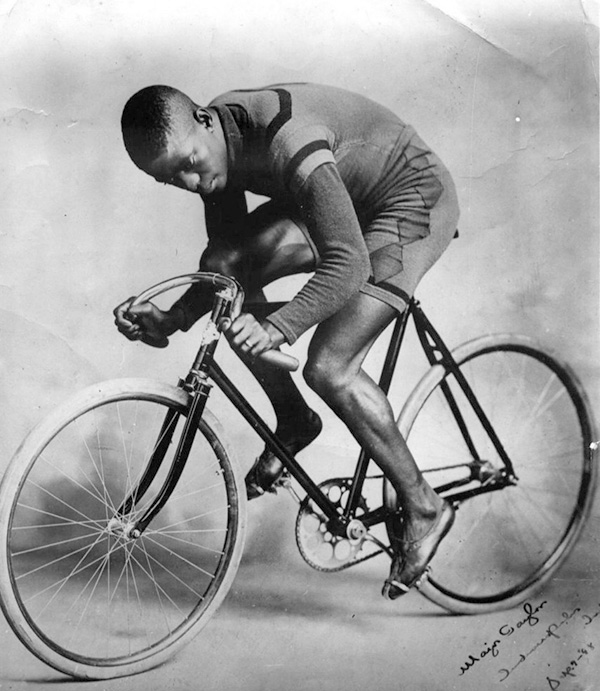
Marshal (Major) Taylor, an early cycling champion. (Read more below.)
Did You Know?
- Before the word ‘bicycle’ became popular (coming from the French word ‘bicyclette’), bikes were typically called ‘velocipedes’. (Science Kids)
- Track Cycling has been around since at least 1870 before the first mass produced automobile! (Wikipedia)
- The first Track Cycling World Championships were held in 1893 in Chicago, USA by the International Cycling Association, before the International Cycling Union (UCI) took over their jurisdiction in 1900. (British Cycling Federation)
- With the exception of the 1912 Olympics, track cycling has been featured in every modern Olympic Games. Women's track cycling was first included in the modern Olympics in 1988. (Wikipedia)
- The fastest speed a person has ever gone on a track bike is 167.043 miles per hour. (Team USA)
- Banking in the turns, called superelevation, allows riders to keep their bikes relatively perpendicular to the surface while riding at speed. When travelling through the turns at racing speed, which may exceed 85 km/h (52.8 mph), the banking attempts to match the natural lean of a bicycle moving through that curve. At the ideal speed, the net force of the centrifugal force (outward) and gravity (downward) is angled down through the bicycle, perpendicular to the riding surface. (Wikipedia)
- Bicycles for velodromes have no brakes. They employ a single fixed rear gear, or cog, that does not freewheel. This helps maximize speed, reduces weight, and avoids sudden braking while nevertheless allowing the rider to slow by pushing back against the pedals. Your first bike may have been a fixed gear. (Wikipedia)
- The length of the track has varied since the early days of track cycling but nowadays all accredited events take place on a one-lap track of 250m. (BBC)
- Before Babe Ruth joined the Yankees, cyclists were the highest paid athletes. (Team USA)
- Massachusetts most famous “track” racer was Marshall (Major) Taylor (Nov. 26, 1878-June 21, 1932), who lived in Worcester, Massachusetts, after he was banned from cycling competition in Indiana, because he was winning too much and was african-american, which some felt caused racial tension. He was affectionatlly called the Worcester Whirlwind. The African-american bike racer won many races and became a World Champion despite the fact that he was discriminated against in most of his races by the white competitors. (Wikipedia)



